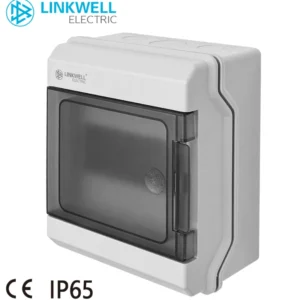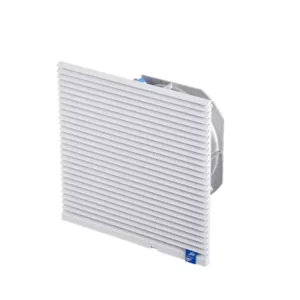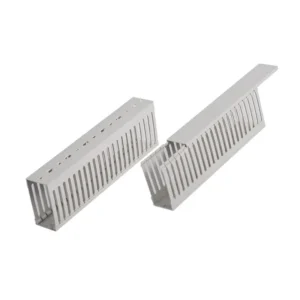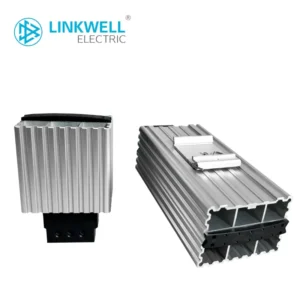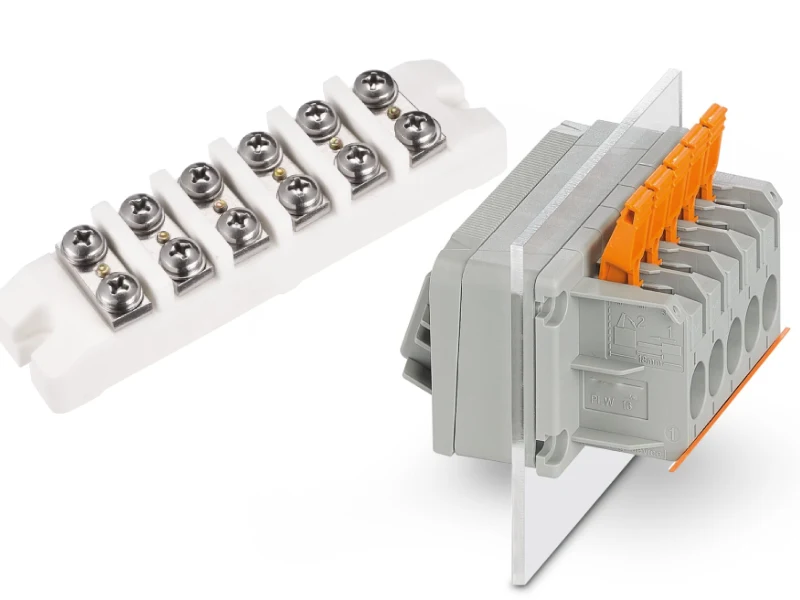Let’s face it, junction boxes, while essential for electrical safety and functionality, aren’t always the most aesthetically pleasing elements in our homes or workspaces. Those utilitarian metal or plastic squares can sometimes disrupt the flow and visual harmony of a well-designed room. But fear not! There are numerous creative and practical ways to conceal these necessary components without compromising safety or accessibility.
In the use of modern electrical cabinet components, hidden wiring is also an important design feature
Both terminal blocks and CMS Cable Management are designed with the same original intention of Hide Junction Box.
This blog post dives into a variety of clever techniques and DIY-friendly ideas to help you hide junction boxes effectively. From simple decorative covers to more integrated solutions using furniture and artwork, we’ll explore how you can seamlessly blend these electrical access points into your existing décor, transforming them from eyesores into subtle, almost invisible features.
Electrical Junction Box Enclosures
Recommended products
What Are Electrical Junction Box Enclosures?
Electrical Junction Box Enclosures are protective housings designed to connect, organize, and protect electrical wires and components. They keep connections safe from dust, moisture, accidental contact, and mechanical damage—ensuring system reliability and compliance with safety standards.
These enclosures are essential in residential, commercial, and industrial installations, where safe electrical distribution and long service life are critical.
Key Features of Electrical Junction Box Enclosures
- Durable Build: Available in steel, aluminum, ABS, and polycarbonate.
- High Protection Levels: IP54, IP65, or IP67 options against dust and water.
- Safety Standards: UL, IEC, CE, and RoHS compliant for global markets.
- Custom Sizes: Wide range of dimensions and mounting choices.
- Easy Maintenance: Knockouts, removable covers, and clear wiring space.
Material Options
- Metal Junction Box Enclosures – High strength and fire resistance, ideal for industrial plants.
- Plastic Junction Box Enclosures – Lightweight and corrosion-resistant, perfect for telecom and outdoor setups.
- Stainless Steel Junction Box Enclosures – Superior durability and chemical resistance for harsh environments.
Recommended products
Applications
- Residential Wiring – Safe protection for household electrical circuits.
- Commercial Buildings – Reliable connections in offices, hotels, and retail spaces.
- Industrial Automation – Secure housing for control wiring and sensors.
- Telecom & Data Centers – Protects sensitive signal and power cables.
Why Choose Our Electrical Junction Box Enclosures?
As a specialized manufacturer, we ensure:
- OEM & Customization – Tailored enclosures for your specific projects.
- Global Standards Compliance – Certified products for worldwide use.
- Bulk Supply & On-Time Delivery – Scalable production for wholesalers and OEMs.
- Long-Term Value – Reliable enclosures that minimize replacements and downtime.
Supporting Products
- Fan & Filter Units – For cooling and ventilation.
- Thermostats & Hygrostats – For climate control inside enclosures.
- Distribution Terminal Blocks – For safe and organized wiring.
- Enclosure Heaters – Prevent moisture and condensation.
Why Hiding Junction Boxes
Hiding junction boxes, while sometimes desired for aesthetic reasons, is primarily motivated by safety and practical considerations. Ensuring these electrical connection points are properly concealed and protected is crucial for preventing accidents and maintaining the integrity of the electrical system. By understanding the reasons behind hiding junction boxes, we can better appreciate the importance of doing it correctly and in compliance with electrical codes.
One of the main reasons for concealing junction boxes is to protect the electrical connections themselves. Exposed wires and connections are susceptible to physical damage, dust accumulation, and moisture ingress, all of which can lead to short circuits, malfunctions, and even electrical fires. Enclosing these connections within a junction box, and subsequently concealing the box, provides a barrier against these hazards, ensuring the longevity and reliability of the wiring. Furthermore, hiding junction boxes can also enhance safety by preventing accidental contact with live wires, especially in areas accessible to children or pets.
Here are some key reasons why hiding junction boxes is important:
- Protection of Connections: Enclosures shield wires from physical damage, dust, and moisture, preventing shorts and malfunctions.
- Enhanced Safety: Concealing boxes reduces the risk of accidental contact with live electrical components, especially for children and pets.
- Aesthetic Improvement: Hiding unsightly boxes contributes to a cleaner and more visually appealing environment.
- Prevention of Tampering: Concealed boxes are less likely to be tampered with, ensuring the integrity of the electrical system.
- Code Compliance: Electrical codes often require connections to be enclosed and, while accessible, not openly exposed for safety reasons.
How to Hide Junction Box in Wall?
Hiding a junction box in a wall requires a balance between aesthetics and accessibility, ensuring that the box remains reachable for future maintenance or inspections while seamlessly blending with your decor. It’s crucial to remember that junction boxes must always remain accessible and cannot be permanently sealed behind walls without proper provisions. This guide outlines several methods to discreetly conceal a junction box within a wall while adhering to electrical code requirements.
Step 1: Assess the Junction Box Location and Size
Before attempting to hide a junction box, carefully assess its current location and size. Consider why the box is visible and what your goals are for concealing it. Is it simply an unsightly metal box, or does it protrude awkwardly? Understanding the existing situation will help you determine the most appropriate concealment method. Also, take precise measurements of the junction box, including its width, height, and depth. This information is crucial for selecting or creating a suitable covering that will fully conceal the box without being too bulky or drawing unnecessary attention.
Furthermore, evaluate the surrounding wall area. Is it a flat, uniform surface, or does it have texture or existing features that you can work with? Consider the material of the wall (drywall, plaster, etc.) as this might influence your choice of concealment method and the ease of installation. Ensure there are no other utilities, such as plumbing or HVAC ducts, directly behind the wall in the immediate vicinity of the junction box, as any modifications could potentially damage these systems.
Step 2: Choose a Concealment Method
Several creative methods can be employed to hide a junction box in a wall, each with its own advantages and considerations. One common approach is to use a decorative wall plate or cover specifically designed for this purpose. These come in various styles, materials, and finishes to match your wall decor and often feature a removable or hinged design for easy access to the junction box when needed. Another option is to integrate the junction box into a larger decorative element, such as a picture frame, a small shelf, or even a faux electrical outlet cover.
When selecting a concealment method, prioritize solutions that do not permanently obstruct access to the junction box. Electrical codes mandate that junction boxes must remain accessible for safety and inspection purposes. Avoid simply covering the box with drywall or wallpaper without a removable access panel. Consider the frequency with which you might need to access the box. If it’s a rarely accessed junction, a more integrated concealment might be acceptable, but for frequently accessed boxes, ease of opening and closing should be a primary consideration.
Step 3: Install the Chosen Concealment
Once you’ve selected a suitable method, carefully proceed with the installation. If you’re using a decorative wall plate, ensure it is appropriately sized to completely cover the junction box and securely attach it to the wall using screws that align with the box’s mounting holes or with anchors if necessary. For more integrated solutions like picture frames or shelves, carefully plan the placement to ensure the junction box is fully concealed but still accessible from the back or via a removable panel.
When installing any concealment, double-check that it does not interfere with the proper functioning of the electrical components within the junction box. Ensure there is adequate clearance and that no wires are pinched or strained. If you are creating a custom cover, make sure it is made of non-conductive material or properly grounded if it’s metallic. Always prioritize safety and consult with a qualified electrician if you are unsure about any aspect of the installation or if the junction box involves complex wiring.
Step 4: Blend the Concealment with Your Decor
The final step is to seamlessly blend the concealment with the surrounding wall decor. If you’ve used a decorative wall plate, choose one with a finish and style that complements your existing wall color and texture. For more integrated solutions, ensure the colors, patterns, and materials of your chosen decorative element harmonize with the room’s overall aesthetic. Consider painting the cover to match the wall color or using textured paint to mimic the wall surface.
Think about the viewing angle and lighting in the room to ensure the concealed junction box does not cast unwanted shadows or appear out of place. Small details, such as matching the screw head colors or ensuring clean lines around the edges of the concealment, can make a significant difference in achieving a truly seamless look. The goal is for the junction box to disappear into the wall, unnoticed by casual observers, while still remaining readily accessible when needed.
How to Hide a Junction Box in the Ceiling?
While hiding a junction box entirely within a ceiling without any visible access is against electrical codes in the United States, there are creative ways to make them less conspicuous while maintaining the required accessibility. The key is to integrate the junction box cover seamlessly into the ceiling’s appearance or disguise it as a common ceiling feature. Remember, junction boxes must always be accessible for safety and future maintenance.
Utilize Paintable or Decorative Ceiling Plates
One of the simplest methods is to use a paintable ceiling plate designed to cover junction boxes. These plates, often made of plastic or thin metal, can be painted to perfectly match the surrounding ceiling color and texture, making them blend in almost seamlessly. For a more decorative touch, various styles of ceiling medallions or canopies, typically used with light fixtures, can be adapted to cover a junction box. Choose a design that complements your ceiling’s aesthetic. Ensure that the chosen plate or medallion is easily removable to allow access to the box.
Integrate with Light Fixture Bases
If the junction box is located where a light fixture was or will be installed, the base or canopy of the fixture itself will naturally conceal the box. Ensure that the fixture base is large enough to fully cover the junction box and its mounting hardware. For unused junction boxes, consider installing a decorative but non-functional light fixture base or canopy that matches other fixtures in the room. This creates a consistent look while still providing access if needed.
Conceal Within or Behind Ceiling Elements
For ceilings with existing architectural elements like beams or panels, you might be able to strategically position the junction box so that it is partially or fully concealed by these features. Ensure that any concealing elements are easily removable or have access panels that allow you to reach the junction box without damaging the surrounding structure. Similarly, for drop ceilings, the junction box can be located above a removable tile, making it accessible by simply lifting the tile.
Create a Purposeful Access Panel
Instead of trying to make the junction box disappear, consider creating a small, intentional access panel that blends with the ceiling. This could be a square or round panel that is painted to match the ceiling and is held in place with magnets or small, flush-mounted screws. Frame the panel neatly to make it look like a planned feature rather than a patch. Ensure the panel is large enough to provide comfortable access to the junction box for any necessary work.
Disguise as a Ceiling Sensor or Vent
In some cases, a junction box can be cleverly disguised as a common ceiling fixture like a smoke detector base (without the detector), a non-functional air vent, or a speaker grille. Choose a disguise that is plausible for your ceiling type and room. Ensure that the “disguise” is easily removable to access the junction box. Paint it to match the ceiling for a more integrated appearance.
Creative Ways to Hide a Junction Box
Creative ways to hide a junction box go beyond simply covering it up; they involve integrating it seamlessly into your existing decor or even turning it into a subtle design feature. The key is to balance aesthetic appeal with the crucial requirement of maintaining accessibility for safety and future electrical work. By thinking outside the traditional wall plate, you can find innovative solutions that make these necessary electrical components blend harmoniously with your living space.
Utilize Decorative Wall Plates and Covers
One of the simplest yet effective creative ways to hide a junction box is by using decorative wall plates and covers. These come in a vast array of styles, materials, and finishes, allowing you to select one that perfectly complements your wall color, texture, and overall room decor. From sleek, modern designs to more ornate, traditional options, a well-chosen cover can transform an unsightly junction box into an unobtrusive element. Consider paintable covers that can be matched exactly to your wall color for a truly seamless look, or opt for textured finishes that mimic the surrounding wall surface.
Integrate into Picture Frames or Artwork
Another creative approach involves incorporating the junction box into a picture frame or piece of wall art. For a flush-mounted box, you can select a frame that is deep enough to conceal the box and its cover. The artwork itself can then be mounted over the frame, using hinges or a similar mechanism to allow easy access to the junction box when required. Alternatively, consider creating a shallow shadow box-style frame where the junction box cover becomes part of the back panel, with decorative elements arranged in front to draw the eye away from it.
Conceal Behind or Within Furniture
Strategic furniture placement can also be a clever way to hide a junction box. If the box is located near the floor or behind a piece of furniture, you might be able to partially or fully conceal it simply by positioning a sofa, bookshelf, or cabinet in front. Ensure that the furniture doesn’t block access entirely and can be easily moved if needed for maintenance. For junction boxes higher up the wall, consider using tall plants or decorative screens placed strategically to obscure the view without obstructing access.
Disguise as Faux Fixtures or Outlets
A more inventive method involves disguising the junction box as a faux electrical fixture or outlet. For instance, a small, decorative sconce without actual wiring could be mounted over a junction box, using the box as its mounting point. Similarly, a non-functional outlet cover, perhaps with a decorative plate or a small attached artwork, can effectively conceal a junction box while appearing to be a regular electrical fitting. Ensure that any such disguises are clearly non-operational to avoid confusion.
Create a Purposeful Access Panel
Instead of trying to make the junction box disappear entirely, consider creating a purposeful and aesthetically pleasing access panel. This could involve using a small, hinged wooden door that is painted to match the wall or features a decorative design. Alternatively, a fabric panel held in place with magnets or Velcro can provide a softer, more integrated look. The key is to make the access panel look intentional rather than like a poorly concealed afterthought, ensuring it blends with the room’s design while still providing easy entry to the junction box.
Electrical enclosures Junction Box
Recommended products
What is a Junction Box?
An Electrical Enclosure Junction Box is a protective housing used to connect, organize, and safeguard electrical wiring. It prevents accidental contact, shields sensitive connections from dust, moisture, and damage, and ensures compliance with safety regulations. Junction boxes are essential in residential, commercial, and industrial applications.
Key Features of Junction Box
- Durable Construction: Made from metal (steel, aluminum) or non-metallic materials (ABS, polycarbonate).
- Safety Compliance: Meets IEC, UL, CE, and RoHS standards for electrical enclosures.
- Protection Rating: Available with IP54, IP65, or IP67 for dust and water resistance.
- Versatile Sizes: Multiple dimensions and mounting options for different applications.
- Easy Access: Removable covers and knockouts simplify wiring and inspection.
Material Options
- Metal Junction Box: High strength, fire resistance, commonly used in industrial and commercial buildings.
- Plastic Junction Box: Lightweight, corrosion-resistant, often used for telecom and outdoor wiring.
- Stainless Steel Junction Box: Provides superior corrosion resistance for harsh environments such as chemical plants.
Applications
- Residential Wiring: Safe distribution of power in homes and apartments.
- Commercial Buildings: Organizing complex electrical systems in offices, malls, and hotels.
- Industrial Automation: Protecting control wiring and sensors inside manufacturing plants.
- Telecom Systems: Safeguarding sensitive signal wiring in telecom cabinets.
Why Our Junction Boxes?
As a trusted manufacturer, we provide:
- OEM & Customization: Tailored designs, branding, and dimensions.
- Certified Quality: IEC, UL, and ISO compliance.
- Global Supply Chain: Reliable bulk production and timely delivery.
- Value for Wholesalers & Distributors: Competitive pricing, long service life, and low return rates.
Supporting Products
- Control Transformers – For stable voltage supply inside enclosures.
- Terminal Blocks – For secure wiring connections.
- Enclosure Heaters – To prevent condensation inside the box.
- Cable Management Systems (CMS) – To keep wiring organized and safe.
Recommended products
Can You Hide a Junction Box Behind Drywall
No, you cannot legally or safely hide a junction box permanently behind drywall without providing a means of access.
Electrical codes, such as the National Electrical Code (NEC) in the United States, explicitly require that all junction boxes remain accessible. This regulation is in place for several critical reasons, primarily concerning safety and the ability to perform future maintenance or troubleshooting on the electrical system. Burying a junction box behind a finished wall would violate these codes and create potential hazards.
The requirement for accessibility ensures that if a problem arises within the wiring connections inside the box, such as a loose wire, a short circuit, or overheating, it can be located and addressed without having to tear into the wall. This not only simplifies repairs but also significantly reduces the risk of hidden electrical faults leading to more serious issues, including electrical fires. Imagine trying to diagnose a flickering light or a non-functional outlet if the junction box containing the relevant connections was completely concealed and its location unknown.
While the desire to achieve a seamless aesthetic is understandable, it’s essential to prioritize safety and code compliance when dealing with electrical installations. Instead of burying a junction box, explore the various creative concealment methods that allow for both a visually appealing result and continued access. These include using decorative wall plates, integrating the box into artwork or furniture, or creating purposeful access panels that blend with your decor. Remember, accessibility is non-negotiable for junction boxes.
Conclusion
In conclusion, concealing unsightly junction boxes doesn’t have to be a daunting task. With a little creativity and the right approach, you can seamlessly integrate these necessary electrical components into your decor. From simple painting techniques to more elaborate furniture placement, numerous options exist to minimize their visual impact without compromising safety or accessibility.
Remember, while aesthetics are important, maintaining easy access to junction boxes for maintenance or future modifications is crucial. Always prioritize solutions that are code-compliant and do not permanently obstruct the box. By thoughtfully applying these creative concealment methods, you can achieve a cleaner, more polished look in your space.
Need junction boxes tailored to your specific aesthetic and functional requirements? We offer custom junction box solutions to blend with your design seamlessly. Contact us today to discuss your project needs and discover how we can provide the perfect fit for your space.

